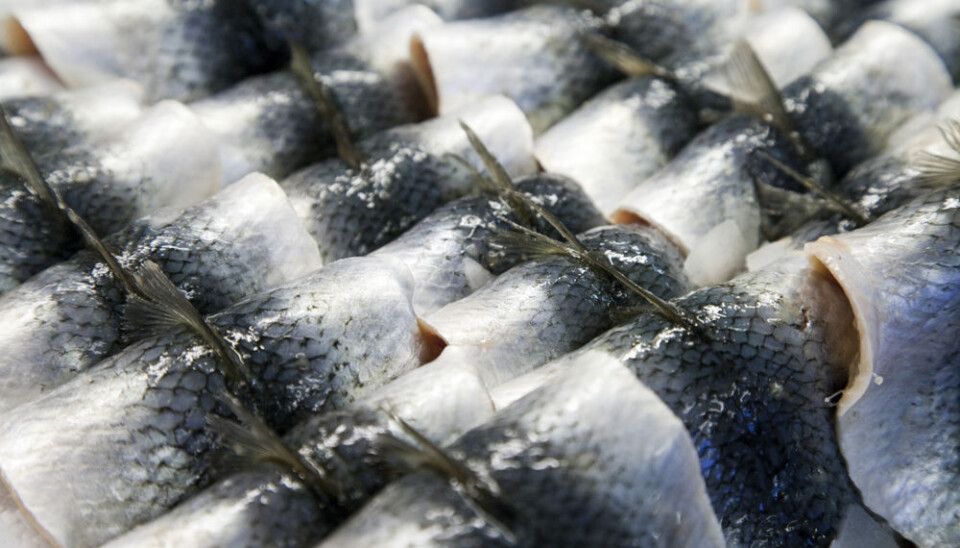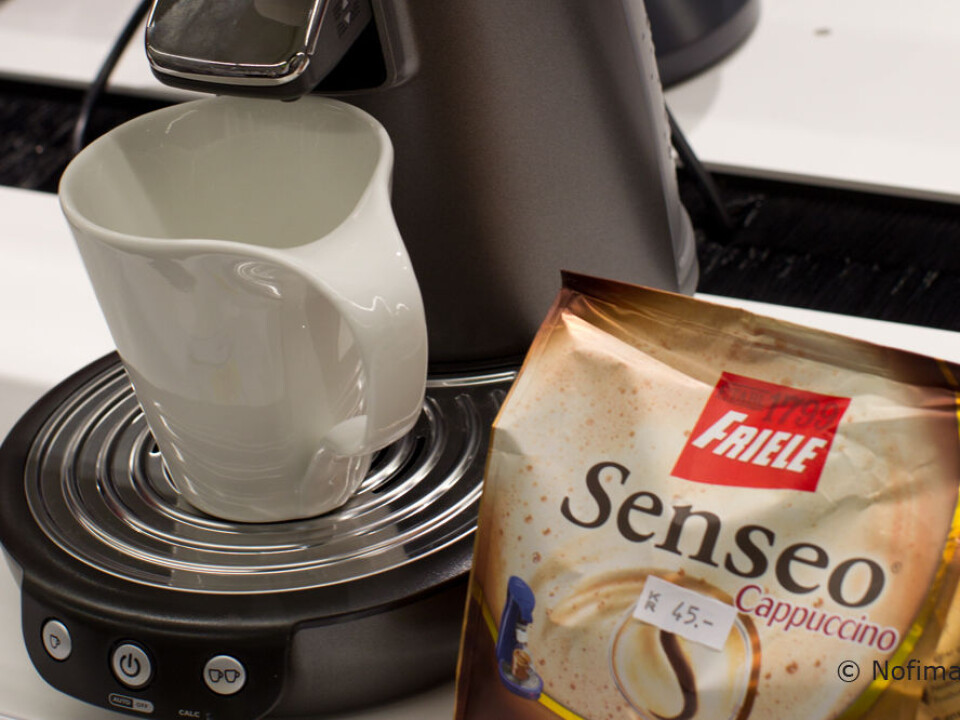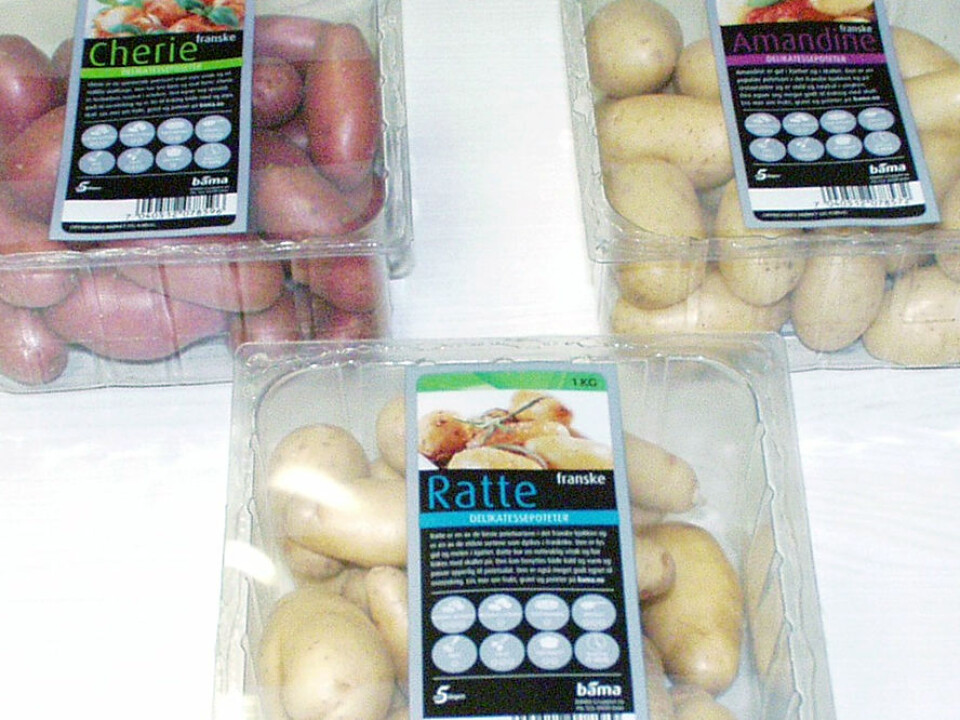This article was produced and financed by Nofima The Norwegian Institute of Food, Fisheries and Aquaculture Research

Coffee and potatoes point the way for herring
The herring has much to learn from potatoes and coffee when it comes to marketing and developing new products.
Denne artikkelen er over ti år gammel og kan inneholde utdatert informasjon.
Audun Iversen, Research Scientist at the food research institute Nofima, has been studying other successful food products to see whether anything better can be done for the profitability of herring and mackerel.
Norway produces about a million tonnes a year of herring and mackerel, but the producers are left with little to show in terms of earnings per kilo of fish.
A number of other food products have seen an upswing after their industries made a conscious decision to increase values. The Fishery and Aquaculture Industry Research Fund has therefore commissioned Nofima to investigate what these have done right that might be transferred to herring and mackerel.
"Our main focus is not to copy the successes of others, but to learn from them. If the herring and mackerel industry can devise new strategies that break through, there could be a lot of money involved," says Iversen, who has interviewed experts from the value chains for coffee, potatoes and chicken.
More varieties - focus on origin

People in Norway mainly eat herring as a sandwich topping, usually pickled herring bought in jars. A common denominator of all the successful producers in the study is that they have succeeded by extending their range - not necessarily their volume.
The coffee industry has focused on the product's place of origin. Instead of selling "just coffee", they began to explain to customers that the coffee they were buying came from Brazil, Kenya, Mexico or India, and that this gave it unique flavour characteristics. They also took care to tell the story behind the product in an interesting way.
These coffee beans have not been processed any further, but they are sold in a wide range of different types and packs, at a higher price. When seeking to increase value creation, avoiding more expensive refinement and processing when extending the product range is an important consideration.
Chicken has also seen explosive growth in recent years. In 1995 the basic choice was between grilled chicken, frozen marinaded chicken or whole frozen hens. Ten years later, you could buy chicken as a sandwich topping, sausages, breaded products, fresh tray-packed products and in semi-finished form. Over the same period, Norwegians went from eating 4 kilos of chicken a year to 16.

"This shows that a greater variety in the shops gets people to eat more. That is an important lesson for the Norwegian fishing industry to learn," says Iversen.
From boring to exciting
Herring and mackerel are not normally seen as the most exciting items on Norway's supermarket shelves. The same was probably true of potatoes, until some of the potato producers got a grip on the situation. They managed to pull off the feat of doubling potato prices without increasing production and without doing anything to the product itself.
The trick was to teach consumers to use different types of potato for different purposes. You don't just find two types of poatoes in the shops these days.
Today there are around 50 different potato varieties for sale during the course of the year, along with information about possible uses and tasting notes. The potato is still a seasonal product and the range varies a good deal with the seasons, but on average there are between 10 and 20 varieties in the shops all year.
"We can see the same trend with many food products. The producers are consciously working to widen the range and raise quality, and they are focusing on new applications - and not least on easy solutions," says Iversen.
Understand the consumer
In order to extend the range of products, an understanding of the customers' needs and preferences is needed. Although the raw materials may differ, the consumer is the same, as are the distribution channels. This means that what is required from the producer is also quite similar, according to Iversen.
Norwegian consumers think that the most important things about a food product are that it should taste good, that it is easy to prepare and that it is healthy and eco-friendly.
"Those last two ease people's consciences, but they are not as important as the flavour and ease of preparation," says Iversen.
But consumers in other markets have other preferences. Norwegian herring is sold to many countries. In Russia and Eastern Europe, a much wider range of products is seen than we are used to in Norway. Tastes and preferences can vary a great deal from region to region in these countries, which means that there are many small and varied markets. According to Iversen, we do not know enough about these markets to be able to tailor products for them.
For Norwegian producers, it is mainly a case of facilitating processing, production and retail sales in other countries. The more different varieties of raw materials that are offered, the more different products can be sold in the shops.
Quality and strategy
Another common denominator in the success stories Iversen studied is the focus on quality. High product quality is a way of standing out among competitors. The producers have managed to raise consumer awareness of quality. Many consumers are now willing to pay more for high quality products differentiated with names such as "flavour tomatoes" or "Livèche chicken".
This makes it possible to create a product spectrum of the same type of product based on different qualities, and therefore different prices. The challenge in this strategy is to ensure that the products actually deliver the same quality every time.
"We have seen examples of producers that have facilitated this in their production. Coffee producer Friele has built up its own taste laboratory to ensure that every day's production of breakfast coffee has the right flavour. If customers get the product they expect, the chances are higher that they will buy it again," says Iversen.
The results of the survey give the herring and mackerel industry the basis for choosing between various strategies for developing the value chain.
"There are great opportunities for increasing value creation and there are several strategies to choose from," says Iversen.
More different, tasty and easily prepared products could be the recipe for success for herring, as it has been for many other food products.
"But it is important for the industry to cement relations further into the value chain, closer to the supermarkets and consumers. The more demanding the customers are, the more they can contribute to developing the industry," concludes Iversen.
------------------------------------------------------------------






























